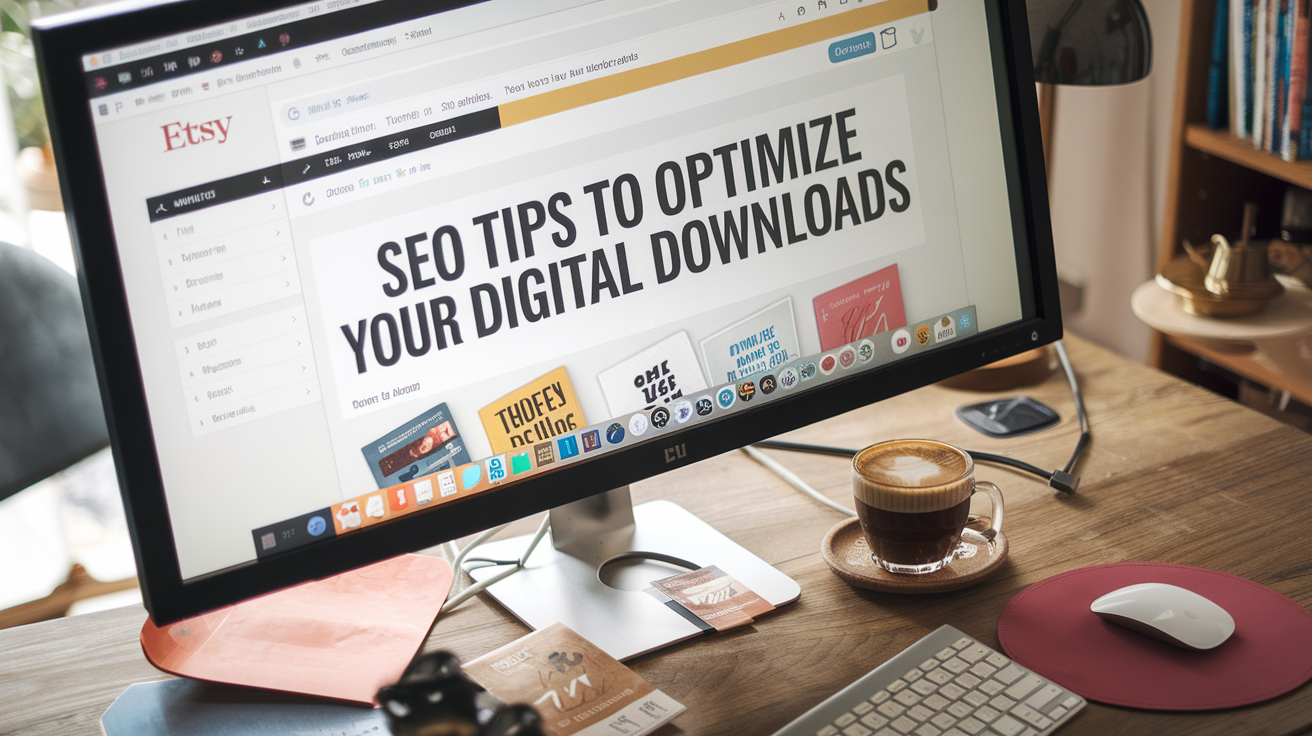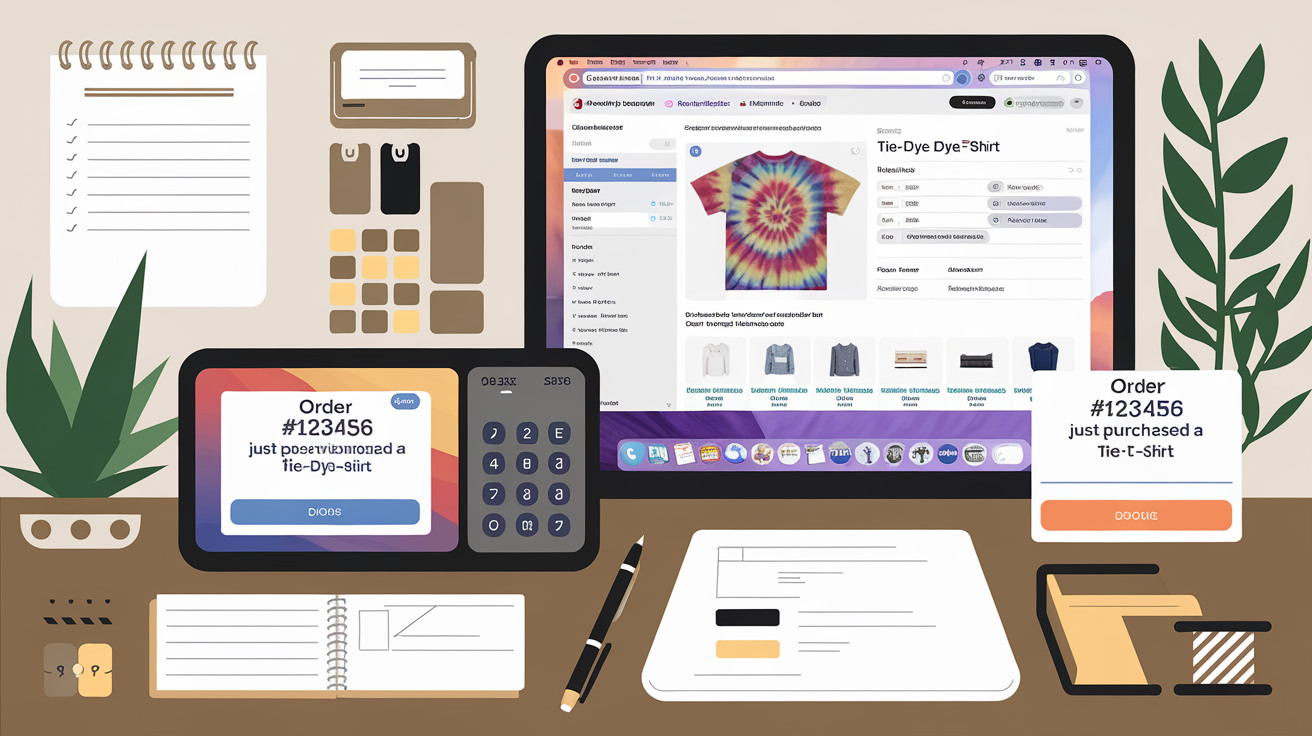

In the ever-evolving digital marketplace, selling digital downloads has become a lucrative avenue for creators and businesses alike. However, standing out in a crowded space requires more than just great products; it demands a strategic approach to search engine optimization (SEO). By mastering a few digital download SEO tips, you can ensure your content gets the visibility it deserves, attracting more users and driving higher sales.
This blog post dives into the essential strategies you need to optimize your digital downloads for search engines. From crafting compelling descriptions to leveraging SEO best practices, we’ll provide actionable insights to help your digital products rank higher, reach the right audience, and achieve lasting success.
Understanding Digital Download SEO
SEO for digital downloads is all about ensuring your products are easily discoverable by search engines and potential customers. Whether you’re selling e-books, templates, or software, optimizing your digital products can significantly impact their visibility and sales. But where do you start?
First, it’s essential to recognize the role of keywords in SEO for downloadable content. Keywords like “optimize digital products for SEO” or “SEO best practices for digital downloads” help search engines understand the relevance of your product pages. Conducting thorough keyword research ensures you target phrases with high search volume and low competition, giving your products a better chance to rank.
Common mistakes to avoid include stuffing keywords unnaturally, neglecting metadata, and failing to create unique descriptions for each product. Instead, focus on building a solid foundation with clear, user-focused strategies. Understanding these SEO basics will prepare you to optimize your digital products effectively and reach your target audience.
How to Optimize Digital Products for SEO
Optimizing your digital products for SEO involves more than just adding a few keywords to your product descriptions. It requires a comprehensive strategy to make your content both user-friendly and search engine-friendly. According to a study by BrightEdge, 68% of online experiences begin with a search engine, which underscores the importance of strong SEO practices for your digital downloads.
1. Conduct Thorough Keyword Research
Identify the search terms your audience is using to find similar products. Tools like Google Keyword Planner or SEMrush can help you discover relevant keywords such as “SEO for downloadable content” or “digital product SEO strategy.” Focus on long-tail keywords that reflect specific user intent, as these are often less competitive and more likely to convert.
2. Optimize Product Titles and Descriptions
Product titles and descriptions are your first opportunity to integrate keywords naturally. For example, instead of naming a product “Downloadable Guide,” try “SEO-Friendly Guide to Digital Marketing.” Including phrases like “optimize digital products for SEO” not only boosts your ranking potential but also informs users about the product’s relevance to their needs.
3. Leverage Metadata for Better Rankings
Metadata, including meta titles and descriptions, is crucial for search engine rankings. Ensure your meta title includes the primary keyword, such as “digital download SEO tips,” and keep descriptions concise yet compelling. For instance, a meta description like “Learn proven strategies to optimize your digital downloads for better search visibility and higher sales” can drive more clicks.
4. Focus on Page Structure and Accessibility
Well-structured product pages improve both user experience and search engine crawls. Use headings (H1, H2, etc.) strategically to organize your content and include keywords in headings where appropriate. Additionally, 61% of all web traffic comes from mobile devices, according to Statista, so optimizing your product pages for mobile users is essential to capturing this audience.
5. Use High-Quality Visuals and Optimize Alt Text
Images and videos can enhance the appeal of your digital download pages, but they also present another opportunity for optimization. Compress image files for faster page load times, and use descriptive alt text that incorporates keywords. For example, an image alt text could read, “Preview of SEO-friendly digital product template.”
By applying these optimization techniques, you’re not just increasing your chances of ranking higher in search results; you’re also creating a seamless experience for users that encourages downloads and builds trust. Remember, effective SEO is about balancing technical improvements with engaging, user-focused content.
3. Crafting SEO-Friendly Downloadable Content
When it comes to creating downloadable content, many people wonder: What makes digital products rank well on search engines? The answer lies in combining high-quality content with thoughtful SEO practices. Here, we address some common questions and concerns about making your digital downloads SEO-friendly.
1. How Important Is Unique Content for SEO?
One of the biggest misconceptions is that the same generic description can be reused across multiple digital products. This can lead to duplicate content issues, which search engines penalize. Craft unique, engaging descriptions for each product, focusing on what sets it apart. For example, instead of saying, “A downloadable template for resumes,” you could write, “A modern, ATS-friendly resume template designed to help you land your dream job.”
2. Should I Optimize File Names for Downloads?
Yes, file names play an important role in SEO for downloadable content. Instead of naming a file “document1.pdf,” use descriptive, keyword-rich names like “SEO-tips-for-digital-downloads.pdf.” This small step improves your product’s relevance in search results and makes files easier to organize for users.
3. Does the Format of the Digital Download Affect SEO?
The format itself (PDF, PNG, ZIP, etc.) doesn’t directly impact SEO rankings, but it can influence user experience. Offering products in commonly used and accessible formats improves user satisfaction, reducing bounce rates. Additionally, include an HTML preview or landing page for the content, as search engines cannot crawl the contents of the file itself.
4. How Can I Add Value Beyond the Download?
Many users look for more than just the file; they want guidance on how to use it effectively. Enhance your product pages with value-added content such as usage guides, instructional videos, or FAQs. For example, if you’re selling a digital planner, include a blog or video tutorial on how to set goals using the planner. This additional content not only helps users but also provides more opportunities to incorporate keywords and improve SEO.
5. What About Reviews and Social Proof?
Customer reviews and ratings can significantly boost the SEO of your digital download pages. Search engines view user-generated content as fresh, relevant, and valuable. Encourage satisfied customers to leave reviews, and highlight them prominently on your product page. This not only improves SEO but also builds trust with potential buyers.
By addressing these common questions and concerns, you can ensure that your digital downloads are not only high-quality but also optimized for maximum discoverability. Combining technical SEO with user-focused enhancements will position your products as top-tier offerings in your niche.
Developing an Effective Digital Product SEO Strategy
Having an SEO strategy for your digital downloads is key to building a sustainable flow of traffic and conversions. Here’s how to create a winning approach that incorporates the principles of digital product SEO strategy effectively.
1. Build a Content Ecosystem Around Your Downloads
Your digital products don’t exist in isolation—they should be part of a broader content marketing plan. Create blog posts, videos, or tutorials that provide context for your downloads. For example, if you sell stock photos, write a blog on “Best Practices for Using Stock Images in Marketing,” with a CTA to download your product. This not only integrates SEO best practices for digital downloads but also attracts users who are actively searching for related information.
2. Invest in Link-Building for Digital Products
Backlinks remain a critical factor in SEO rankings. Partner with relevant websites, blogs, or influencers to feature your digital downloads. For instance, a tech blog reviewing your software or templates can drive significant traffic while improving your domain authority. Aim to secure high-quality backlinks that point directly to your product pages.
3. Use Email Marketing to Drive Traffic
Email marketing is an underrated SEO booster. While it doesn’t directly affect rankings, it increases traffic to your site, signaling relevance to search engines. Use newsletters to promote your digital products, and link back to optimized landing pages. Include engaging subject lines like “5 Tools to Elevate Your Work—Download Now!”
4. Analyze and Adjust with SEO Metrics
Regularly monitor your product pages’ performance using tools like Google Analytics or Ahrefs. Track metrics such as organic traffic, bounce rates, and conversion rates. For example, if a page optimized with the keyword “SEO for downloadable content” isn’t performing well, review your metadata, on-page content, and backlinks to identify areas for improvement.
5. Best Practices for SEO for Digital Downloads
Finally, let’s round up with a few tried-and-true best practices that incorporate SEO for downloadable content into every aspect of your digital product pages.
1. Optimize for Mobile Users
Mobile traffic accounts for over 50% of global web visits, according to Statista. Ensure your site is mobile-friendly, with responsive designs, fast-loading pages, and easy-to-navigate product layouts. Test your pages on multiple devices to ensure a seamless experience.
2. Prioritize Site Speed and Performance
A slow website can hurt both your SEO and user experience. According to Google, the likelihood of a user bouncing increases by 32% as page load time goes from 1 to 3 seconds. Compress images, minimize scripts, and use a reliable hosting provider to keep your product pages fast and efficient.
3. Secure Your Site with HTTPS
Trust is vital when selling digital downloads. A secure website not only improves customer confidence but also boosts SEO rankings, as Google prioritizes HTTPS sites. Make sure your checkout process is encrypted and displays trust badges prominently.
4. Encourage User Engagement
The longer users stay on your product pages, the better your rankings. Include interactive elements like demo videos, FAQ sections, or customer testimonials to keep visitors engaged. For example, a demo of a downloadable graphic design template can help users visualize its value while improving on-page dwell time.
5. Refresh Content Regularly
SEO is not a one-and-done process. Refresh your product pages with updated keywords, new images, or additional testimonials to keep them relevant. Regular updates signal to search engines that your content is fresh and worth ranking.
By following these strategies and best practices, you’ll create a robust SEO framework that not only drives traffic but also converts visitors into loyal customers. SEO for digital downloads is a continuous process, but with consistent effort, it can yield long-term rewards.
Conclusion
Optimizing your digital downloads for SEO is a powerful way to ensure they reach the right audience, drive traffic, and boost conversions. By implementing strategies like conducting thorough keyword research, creating compelling product descriptions, and optimizing metadata, you can improve your rankings and visibility. Additionally, addressing common concerns such as duplicate content, mobile optimization, and user engagement ensures a seamless experience for your customers while meeting search engine requirements.
Remember, a strong digital product SEO strategy doesn’t stop at optimization—it involves regular updates, analytics tracking, and incorporating user feedback. By following these tips and best practices, you can turn your digital downloads into a reliable and profitable revenue stream.
Take the first step today: Review your digital products and apply one of the SEO tips shared in this post. Whether it’s improving your metadata or crafting keyword-rich descriptions, small changes can lead to significant results. And don’t forget to share your progress or ask questions in the comments—we’d love to hear from you!









































































